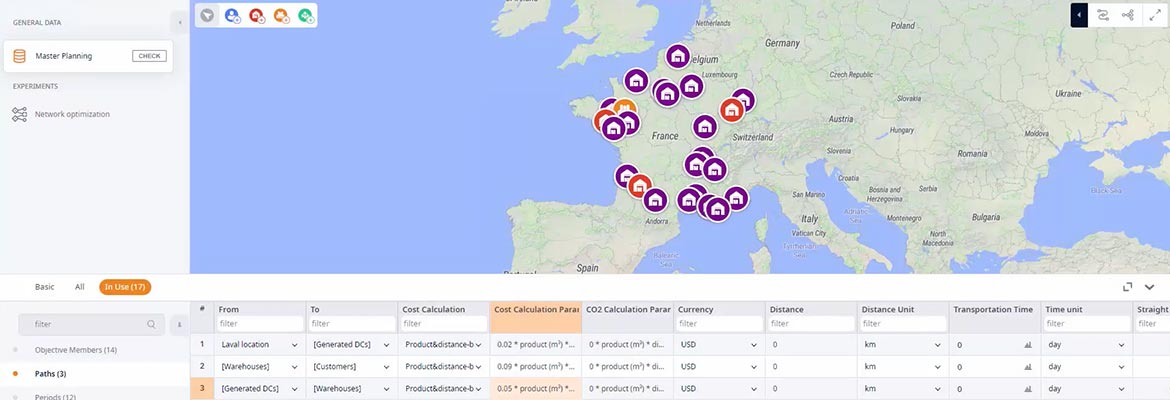To learn more, check out this white paper on analytical optimization in anyLogistix.
Join us online



Many businesses turn to Excel spreadsheets when planning for their supply chains. This traditional approach is relatively easy yet has a limited application area when it comes to solving complex business challenges. Beyond this method, the most powerful techniques for supply chain design are analytical optimization and dynamic simulation.
Analytical optimization is a more common technique for designing supply chains. It helps you find the optimal logistics network configuration and determine the product flows. Meanwhile, dynamic simulation describes business process logic and the interdependencies between system components. Which one should you choose for your business problem? Read on or find the answer in our whitepaper →
Analytical optimization tools, such as those employing mixed-integer and linear programming solvers, are ideal for solving large-scale high-abstraction logistics problems. These problems do not usually require very detailed modeling but can be data-intensive.
A few challenges that can be resolved using analytical optimization:
Transportation
To learn more, check out this white paper on analytical optimization in anyLogistix.

Analytical optimization is one of the best techniques for dealing with such problems — it is fast, works well with large amounts of data, and provides answers to the network-level questions. This is true in cases when you don’t need to consider operational logic, randomness, and dynamics. In anyLogistix supply chain modeling software, there are two experiments that combined will help optimize your logistics network: Greenfield Analysis and Network Optimization.
There are, however, supply chain problems that can’t be solved merely through optimization, such as safety stock estimation, risk assessment, and determining how processes within a facility may influence a whole logistics network, to name a few. To consider the real-time network dynamics, randomness, and specific site-related rules of the supply chain, you need dynamic simulation modeling.
Simulation is often used as the next stage in the planning process after the analytical optimization. The experiments you run with the simulation model give valuable insights on how your supply chain operates in certain conditions. Unlike with optimization, here you aren’t trying to find an optimal solution out of multiple combinations. You only simulate certain what-if scenarios to check assumptions.
While analytical methods describe the logistics network system as flows between facilities, simulation modeling employs the real logic of their interconnections.
Some of the challenges that can be resolved using dynamic simulation:
Check out our white paper on challenges that analytical optimization and dynamic simulation resolve.

anyLogistix is a tool that combines both analytical optimization and dynamic simulation. How can you use these techniques together? There are several ways.
One of them is to determine the number of supply chain facilities and their locations and find the best network configuration using the built-in solver, IBM ILOG CPLEX®. Then, check the quality and validity of the optimization solution by converting it into a simulation scenario in just one click.
You can also use the combination of these techniques the other way round. For example, you might start with supply chain simulation to better understand the dynamics of the system. After that, you can create a more tailored optimization model based on these insights.
To go even deeper in your strategic planning, you can extend the supply chain simulation model into a digital twin — a representation of the actual logistics system. By integrating with the company’s IT infrastructure (ERP, MES, CRM), the technology enables you to predict the behavior and dynamics of a real supply chain to make midterm/short-term decisions.
As you can see, analytical optimization and dynamic simulation don’t replace each other but target different types of problems. To find optimal solutions for large-scale selection problems, you might prefer to run optimization experiments in anyLogistix, such as Network Optimization or Transportation Optimization, with your supply chain model. This could be, for example, to find the best locations for facilities. However, for in-depth analysis of the logistics operations, and dealing with risks and uncertainties in the system, simulation would be a better option.
See how companies around the world apply anyLogistix supply chain modeling capabilities to resolve their business challenges.
To learn more about optimization, simulation, and the way they’re combined in anyLogistix, read our white paper.